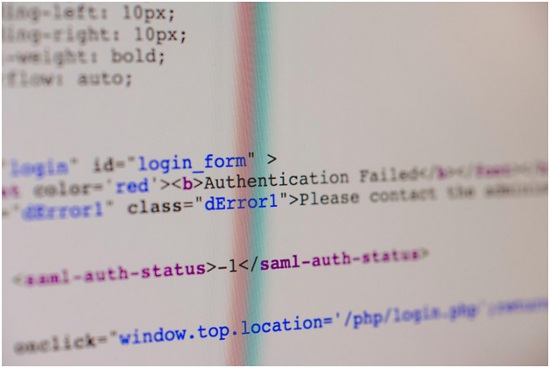The results of security breaches, whether data leaks or identity theft, degrade an organization’s brand and cause huge financial losses. That is why access to resources is restricted to authorized users and unauthorized users are denied access.


The first step in developing a secure and robust information protection system is to implement a strong authentication solution. This system checks the identities of individuals and computing devices that access non-public sections of an organization’s network.
How to Secure Your Authentication System
Authentication is a complex question, and as we’ve seen, it’s all too simple for flaws and weaknesses to come in. Consequently, it is impossible to outline every precaution you might take to secure your websites. Nevertheless, there are a few common guidelines that you should always adhere to.
About SOC 2 Compliance
SOC 2 refers to compliance guidelines for businesses that store client data in the cloud. SaaS providers widely employ it, and SOC 2 SaaS services have their use cases.
With the rise of cybercrime, businesses have to be more vigilant about their security posture. One way to achieve this is through compliance with SOC 2 standards. SOC 2 compliance helps ensure your organization with the proper cyber security plan and is doing enough to protect its data.
SOC 2 is a one-of-a-kind framework that all technical service or SaaS firms can use to maintain customer data in the cloud. This ensures that an organization controls and implements policies to secure customer and client data.
1. Select an Authentication Solution Suitable for Your Business, Users, and Risk
A flexible strategy allows an organization to employ Multi-Factor Authentication (MFA) methods based on risk levels. It may also provide a robust system that can be installed swiftly.
Multi-factor authentication technologies include:
- One-Time Passwords (OTP): These are an MFA method based on a shared secret between the authentication devices and the authentication backend.
- Certificate-Based Authentication (CBA): This approach assures authentication by utilizing public and private encryption keys. These are unique to the authentication device and the individual who holds it.
- Context-Based Authentication: Context-based authentication utilizes contextual information to determine whether or not a user’s identity is legitimate. It is suggested as a complement to existing strong authentication systems.
2. Regular Security Monitors
When new infrastructure is set up, information security assessments must be done to detect and minimize threats. Likewise, a review must also be done when making substantial modifications to an existing system. It must also be done when granting third-party access to internal systems.
In order to develop or upgrade a system, developers must incorporate security protocols.
3. Prevent the Enumeration of Usernames
In a world where online security is of utmost importance, it’s important to take measures to prevent the enumeration of usernames. The enumeration scenario occurs when a malicious user systematically tries all possible username combinations. This can be done manually or through the use of automated tools. There are several ways to prevent enumeration, but the most effective method is to create unique usernames for each user.
Encrypt the username and password using a strong encryption technique. The use of salted hashing is another way to prevent enumeration, and just flat out a better way to store passwords. Salted hashes are generated by adding random bits of data to the plain-text password before hashing it with MD5 or SHA1.
4. Don’t Set Username Rules
Sites and services may demand long usernames, prohibit hidden characters, and deny whitespace. Some sites, however, go too far. They require a minimum of eight characters or prohibit any characters other than 7-bit ASCII letters and digits.
5. Utilize Multi-Factor Authentication
Although multi-factor authentication may not be appropriate for every website, it is far more secure than a password-only login. However, it’s important to remember that confirming several instances of the same factor isn’t the same as real multi-factor authentication.
SMS-based two-factor authentication theoretically verifies two factors (something you know and something you have).
2FA should ideally be performed using a dedicated device or app that generates the verification code directly. These are often more secure since they are purpose-built to ensure security.
6. Consider Every Access Point
Organizations must verify access to any sensitive information, whether on-premise or in the cloud. In addition, organizations should use the same security measures for cloud resources for remote access to the corporate network.
7. Password Reuse Should Be Avoided
Sadly, it is more convenient to reuse passwords than to choose something unique and more secure. Furthermore, hackers have been known to target people with similar passwords. According to the Verizon Data Breach Investigations Report, compromised passwords have a significant role in data breaches.
As an outcome, businesses must adhere to the National Institute of Standards and Technology’s digital identification rules.
8. Use Strong Brute-Force Protection
Given how simple it is to build a brute-force attack, it is critical to make efforts to avoid, or at least interrupt, any attempts to brute-force logins.
Implementing a strong, IP-based user rate limiter is one of the most successful ways. This should include efforts to prevent attackers from changing their visible IP address.
9. Phishing Awareness Training for Employees
Phishing is a method that uses human psychology to trick people into disclosing personal information. The sending of bogus emails from respected persons and organizations is a common phishing example.
Phishing is among the most popular ways of exposing vital systems and personal identities. Because automation can only go so far, individuals must remain vigilant against phishing assaults.
You can avoid phishing by providing interactive staff training that teaches employees how to recognize and report phishing attempts.
10. Create a Safe Authentication Mechanism
Many security problems are solved automatically when using a service like Identity Platform. However, to prevent misuse, your service must always be properly engineered.
Integrating a password reset instead of password retrieval is a must. Also, there are some standard practices for password safeguarding. These include detailed account activity logging and rate-limiting login attempts to stop credential stuffing. Locking out accounts after a certain number of failed logins is also some of the common ways for password protection steps. Furthermore, two-factor verification is crucial for unrecognized devices and accounts that have been inactive for a long time.
Conclusion
Authentication is essential for securing your organization’s vital infrastructure. In addition, authentication is the primary security line against cyber threats in most computer systems.
While asking customers to prove their identity through numerous authentication levels may be time-consuming. These security procedures provide a safe user experience, critical for a successful product or platform.
Protecting your authentication system should be everyone’s priority inside your business. Therefore, make sure everyone follows these actions.















